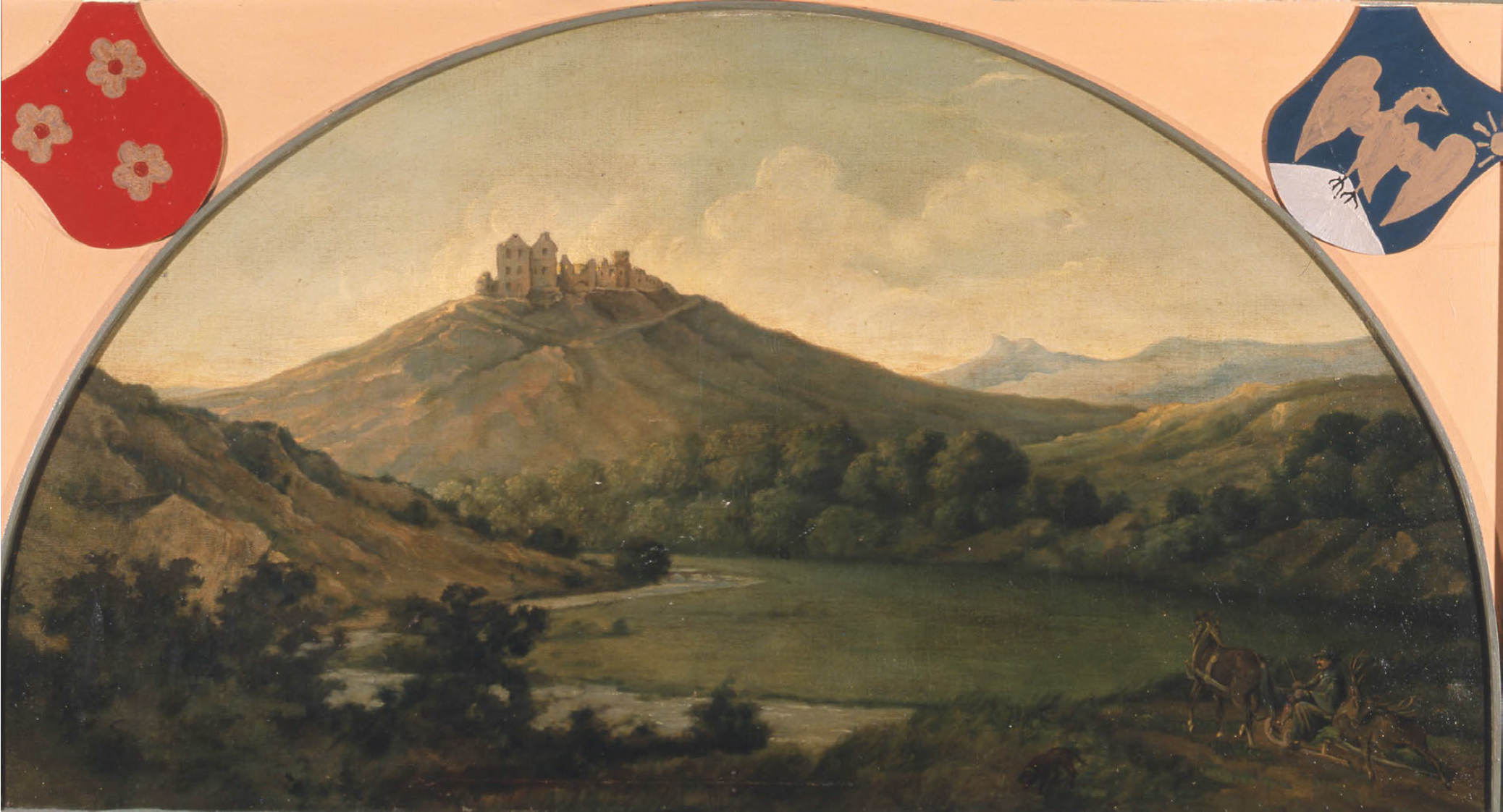The name Arenberga-Arembert-Aremberge-Aremburge is used by a variety of personages between 500 and 1000, including the Frankish duke, Arembert, 626-637, a count Arembert in 847 then an Aremburge of Burgundy in 1032.
When the county of Burgundy was added to the Holy Roman Empire in 1034, we find the count Ulrich d'Arenberg. He was Burggraf or military commander of the town of Cologne, one of the biggest towns in the Middle Ages.
1166 was the beginning of the unbroken direct line of the House of Arenberg, starting with Heinrich, also Burggraf of Cologne, like his father, Gérard, his grand-father Henri and his ancestors Franco II, Arnold, Franco I and Ulrich.
1298: marriage of the last person to bear the name, Mathilde d'Arenberg, threatened by the ambitions of the prince-bishop of Cologne (who had already sequestered the family property in Cologne) to her cousin, count Engelbert de La Marck. From this marriage sprang six branches of the family, each of which became celebrated, amongst them the dukes of Clêves, Juliers, Berg and Ravensberg, the dukes of Nevers, the seigneurs and counts d'Arenberg sensu stricto, the counts of Rochefort, the seigneurs and dukes of Sedan and Bouillon, the barons of Lummen, counts of Schleiden and others.
Among the most famous of them were Guillaume-le-Riche, duke of Clêves, died in 1594, Guillaume-la-Barbe, known as the 'Boar of the Ardennes' (1446-1485), Robert II de La Marck-Sedan, known as Robert-le-Diable (1460-1536), Evrard de La Marck, prince-bishop of Liège from 1506 to 1528, Robert III de La Marck-Sedan, nicknamed 'Lord of Floranges' (1492-1536) and Guillaume de La Marck-Lummen (1542-1578), nicknamed 'King of the Beggars'.
18 August 1547 : Marriage of Marguerite de La Marck d'Arenberg, sister of Robert III de La Marck, who died without issue, with Jean de Ligne, baron de Barbançon. From this marriage sprang the third House of Arenberg, which has continued to this day.
In 1576, the Emperor Maximilien II raised Marguerite de La Marck and her son Charles respectively to the dignities of princess-countess and prince-count of the Holy Roman Empire.
In 1587, Charles d'Arenberg, premier noble of the catholic Low Countries, married Anne de Croy. He sold his Dutch lands after the sequestration between 1609 and 1621 and bought the seigneury of Enghien in 1607. From this time on, the House of Arenberg had its quarters in Brussels, Louvain and Enghien.
On 6 June 1644, the Emperor Ferdinand III made the principality of Arenberg a dukedom of the Empire.
1794 : Invasion of the duchy of Arenberg by the French revolutionary troops and loss of the former duchy by the treaty of Lunéville (1801). Compensation on the right bank of the Rhine and creation, in 1803, of a new duchy of Arenberg after ordinance of the Imperial Diet.
Loss of the new duchy of Arenberg at the Congress of Vienna in 1815. Sequestrations by the Prussians and Hanoverians.
Certain sovereign rights were nevertheless maintained in the duchy of Arenberg-Meppen, which depended on the Kingdom of Hanover, until 1875.
After the end of the First World War, the vast French and Belgian holdings of duke Engelbert-Marie d'Arenberg were sequestrated in 1919 and 1921 respectively.

